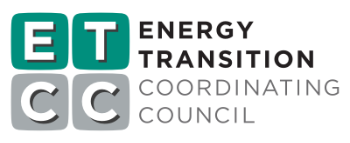Project Info
COMPLETE
Project Title
PoE Microgrids for Commercial Buildings Lab Evaluation
Project Number ET22SWE0053 Organization SWE (Statewide Electric ETP) End-use Whole Building Sector Residential Project Year(s) 2022 - 2025Project Results
The purpose of this study is to evaluate the efficiency and cybersecurity of Power over Ethernet (PoE) building control systems compared with traditional AC-powered systems. As the adoption rates of PoE technology continues to grow across building automation systems, the study sought to assess the technical and operational performance of various PoE-enabled devices, providing insights into both their electrical efficiency and cybersecurity posture. The study's goals include identifying how PoE systems can streamline power and communication infrastructure in commercial buildings, while addressing any associated cybersecurity risks. The team analyzed switch efficiencies across various load profiles, finding that efficiency generally increased as load on the switch increased, even though these efficiencies include some fluctuations at higher loads. For example, the PSE 2 achieved 49 percent efficiency at an 11 percent load, which improved to 83 percent at 91 percent load. However, certain switches, like the PSE 1, exhibited optimal efficiency within a mid-load range, with efficiency peaking at 79 percent at a 67 percent load before dropping to 69 percent at an 84 percent load. This suggests that while switch efficiency improves with increased load, it may plateau or decline as the switch approaches full capacity. These findings highlight the importance of managing switch loads to optimize system efficiency, particularly in PoE applications where power distribution can vary significantly based on the specific devices connected. The study compared the efficiencies of centralized and decentralized PoE architectures, both of which utilized the same types and quantities of PoE devices. The results indicated that centralized systems, such as those using large switches like the PSE 3 and PSE 6, demonstrated significantly better efficiency, achieving 77-80 percent efficiency compared to 74 percent in decentralized systems. This performance advantage is largely attributed to the reduced overhead in centralized configurations, where a single large switch manages multiple loads more effectively. In centralized systems, the computational overhead required to manage PoE functionality is distributed across the entire load, minimizing its impact on overall efficiency. The cybersecurity standards compliance evaluation further highlighted these shortcomings. Several devices, such as those from PoE Manufacturer 3 and 7, were found to be non-compliant with both SB 327 and UL/ANSI 2900, lacking encryption, authentication, and update mechanisms. Devices like PoE Camera showed partial compliance, offering strong encryption but failing in areas such as password management and resilience to malformed inputs. PoE Manufacturer 8 and 9 devices demonstrated the strongest compliance, with PoE Manufacturer 8 fully meeting SB 327 requirements and PoE PAC achieving full compliance with both standards. This analysis underscored the need for manufacturers to provide comprehensive cybersecurity guidance to ensure secure deployment of PoE systems, particularly in commercial environments where potential cyber threats could be significant.
Project Report Document
Loading PDF Preview...
